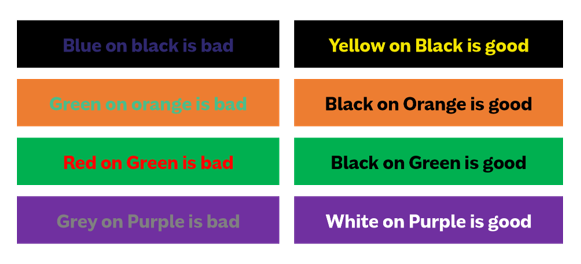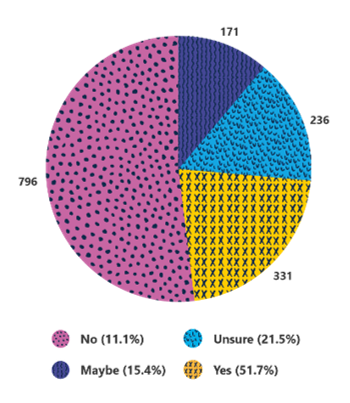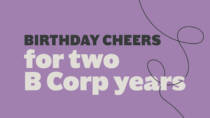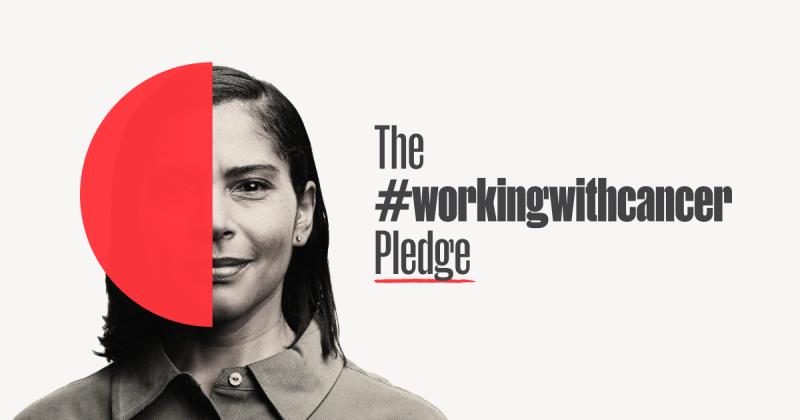How communication overload is slowing organisations down (and how to fix it)
By Sally Pritchett
CEO
Communication overload is slowing your organisation down. Learn practical tips to streamline messaging, reduce distractions, and boost productivity.
Communication overload is slowing your organisation down. Learn practical tips to streamline messaging, reduce distractions, and boost productivity.
As passionate communications experts we love communication….when it’s effective. The problem is too often we’re communicating too much and instead of helping it’s hindering.
We all know how it feels to be constantly swimming against the tide, trying to keep up with an ever-increasing avalanche of emails, notifications and messages, flicking between channels and getting distracted by notifications pinging on multiple devices around us. This constant influx of communication is forcing us to multitask, distracting our concentration, preventing us from getting into productive flow states, and preventing us from achieving important tasks.
Has hybrid working made this worse? Possibly. While very few people are missing the busy, noisy and distracting environments of the pre-pandemic open-plan office, today’s equivalent is perhaps the increased instant messaging platforms pinging away. Sure, we can turn off notifications, but it doesn’t stop our colleagues having questions.
On top of simply not harming productivity, this communications overload is also impacting mental wellbeing, stressing employees out when they feel they can’t keep up no matter how hard they try, and creating a sense of dread that they’re missing important messages and tasks that get buried in the noise.
As professional communicators driven by making a meaningful difference, we want to help the organisations around us. Here’s what we believe are the main culprits are along with our tips for reducing the communications overwhelm.
Too many channels
It’s great that technology blesses us with better channels all the time, but we must be careful to ensure that these new channels aren’t just adding to the noise. Part of the communications overwhelm is purely maintaining and checking so many difference channels.
Our tip: Be brave and don’t be afraid to close channels down.
From closing X and Facebook accounts to turning off internal channels like Yammer or WhatsApp. Question if another existing channel could serve the same purpose.
Poor use of channels
“Email as become a counter-productivity tool” Justin Rosentein, ex-Facebook and co-founder of Asana
If you’ve ever experienced a school parent WhatsApp group when a child loses its blazer, or have been part of a ‘Reply all’ email frenzy, you’ll appreciate how quickly poor communication can do its damage. Unfortunately, poor communications etiquette is common practice in organisations because it’s rare that anyone has been shown how to communicate better. Like leadership skills, there’s an assumption that subject matter experts automatically know how to communicate effectively.
Our tip: Provide effective communications guidance to employees
Help employees to choose the right channel, understand the anatomy of an effective piece of communication and how to use AI tools effectively.
Whilst email isn’t quite dead yet, it is time to reset the way we use it. Email should be limited to 1:2:1 conversation or used as an ‘inform’ broadcast channel only.
Too much collaboration
Yes, we did just say that. It’s obviously great to involve people, engaging stakeholders on the journey is critical to success, but that doesn’t mean cc’ing the whole company every time there’s an update or getting feedback at every stage.
Whether we blame modern matrix management, shifting leadership styles or anxiety over making decisions, there’s no doubt that organisational decision making is slowing down and getting more complex.
Our tip: Increase clarity where possible
Be clear on roles, responsibilities and RACI (Responsible, Accountable, Consulted, Informed). One of the most common reasons for looping in too many colleagues is not being sure who needs to know what, being clear on this can help reduce communications overwhelm.
Poor personal leadership
When we think leadership, we often look to the top of the organisation, but everyone can take responsibility for stepping up personal leadership within their roles and this extends to being concise and considerate in their communications.
Our tip: Empower champions
We can’t all absorb every topic all the time, divvying up projects, workstreams or topic themes provides a great way to funnel communications through individuals so they can filter and share updates when appropriate, reducing the constant overload.
‘Always on’ communications
With hybrid working came many flexibility benefits including a blurring of the general 9-5.30 workday, the challenge this brought for many is a culture of ‘always on’ communication which has added to the feeling of overwhelm.
Our tip: Set the ground rules around the ‘right to switch off’
While for some the ability to work outside of the usual workday helps flex around care responsibilities or other responsibilities, it can add pressure to colleagues to feel always available. Be clear on expectations and the ‘right to switch off’ and increase awareness of ‘send later’ features.
As passionate communicators with experience in supporting large organisations with employee engagement, we’re keen to make sure communication helps drive innovation, builds relationships and enhances productivity. If you think over communications is slowing your organisations down and aren’t sure where to start book a call with us here.
30 practical strategies for creating effective and inclusive internal communications
By Sally Pritchett
CEO
Discover practical strategies to enhance your internal communications, making them more effective, inclusive, and engaging in a world flooded with communication.
Discover practical strategies to enhance your internal communications, making them more effective, inclusive, and engaging in a world flooded with communication.
In a noisy world filled with countless channels and constant ads, internal communication can feel overwhelming for many. Being an excellent, effective and inclusive internal communicator requires a lot of skill and expertise.
In this article, we’ll explore the key areas that make organisational communications more effective and inclusive.
5 strategies to reduce the volume of communication
There’s no doubt that in all organisations communication has become overwhelming and the larger the organisation the more overwhelming this can feel.
‘Constantly talking isn’t necessarily communicating’ Charlie Kaufman
While instant chat channels like Teams and Slack have helped speed up collaboration they’ve also added to the noise and duplication. Already struggling to keep up with the hundreds of daily emails, instant chat messages now mean we’re expecting employees to hold several conversations concurrently. And rather than speed up productivity this multi-tasking is slowing organisations down and impacting employee wellbeing as they fight to prioritise and keep on top of their workloads.
- Pledge to reduce duplication, making communication engaging and effective the first time prevents having to send it multiple times.
- Proactively segment audiences so you can personalise and increase relevancy.
- Increase self-serve information, letting audiences consume information when they’re ready.
- Give your channels a clear purpose, audience and content strategy so the right information is going through the right channels.
- Ditch the routine, if a newsletter is going out weekly because it always has and the deadline is driving the content, it’s time to ditch the deadline and publish on demand instead.
5 strategies to increase the clarity in your communication
There’s an irony to Blaise Pascal’s quote ‘If I had more time, I would have written a shorter letter’ because, of course, we would have more time if we were consuming less communication. In organisational comms, one of the best things we can do is respect our workforce’s limited time.
- Work hard on your subject lines / headings, these are your headlines so think like a journalist.
- Use AI tools to keep your comms concise. AI can be great for getting started, but they can also be quite verbose. write prompts carefully and consider giving a challenging word count.
- Structure your comms thoughtfully: start by setting the topic, add depth in the middle, and end with a clear call to action.
- Reduce company jargon; it complicates communication, especially for newcomers or those in a hurry. Avoid acronyms when possible.
- Set word count limits. If you regularly publish newsletters or intranet articles, be clear on your limits and challenge yourself to stay within them.
5 strategies to increase accessibility in communications
The most creative communications in the world won’t be effective if they don’t enable people with different abilities to access them. All workforces will have employees with differences in visual, hearing, learning and cognitive processing as well as those with limited literacy proficiency.
In the UK, accessibility regulations have been in force for the public sector since 2018 ensuring comms tools like websites, mobile apps and intranets all follow accessibility guidelines. There are no regulations for organisational comms, but that doesn’t need to be a barrier for driving accessibility in your communications.
- Focus on readability, with the average reading age in the UK being 9 years old. Consider using tools like Hemmingway Editor to help simplify your communications.
- Format your text based on its intended use. As most content is consumed digitally, consider how it will be viewed and adjust accordingly. For example, if it’s likely to be read on a desktop screen, use a landscape layout instead of portrait..
- Ensure compatibility with screen readers, this means formatting your documents with consideration.
- Check your colour contrasts as employees with colour blindness may struggle with certain colours or contrasts.
- Get your typography right because font choices and sizes are crucial for making communications effective and accessible.
For a deeper read on accessible comms check out our recent blog or watch our webinar.
5 strategies to use imagery inclusively
The human brain typically processes images significantly faster than written text, making imagery a potential fast track to creating effective communication – when used correctly. Often, however, imagery is also used to break up text, fit existing templates or to make communication ‘look better’. This is where the challenge comes, forcing audiences to process images that add nothing to the overall purpose of the communication.
- Make sure images add to the content, try to avoid bland library shots that add no value.
- Try to avoid overly surreal images unless this is part of your brand identity.
- Authentic representation is vital. If you’re using library images, try adding prompts like ‘diverse’ or specific attributes to result in a wider selection.
- Aim for a balanced representation of people over time to avoid bias towards certain parts of your workforce or reinforcing stereotypes.
- Consider using animation or illustration to provide more options if authentic or appropriate photography isn’t available.
5 strategies to making your communications more audience centric
While it may seem obvious, it’s easy to focus on your own priorities and accidentally overlook how your audience will perceive your communications.
- Consider different job roles and aim to make communications resonate with the frontline. Before sending or approving, put yourself in your audience’s shoes to make improvements.
- Workplaces are diverse with cultural nuances, avoid idioms or complex expressions that could hinder inclusion.
- There are up to five generations in the workforce for the first time, stop and think how communications could be perceived by different ages of your workforce.
- Using audience insights is critical for your messaging to resonate. If the organisation is struggling due to challenging times, staff shortages, or seasonal peaks, ignoring this in your communications can alienate your audience. Instead, acknowledge the organisation’s current situation and ensure your communications are appropriately positioned.
- Stay attuned to how your audience responds, including their preferred channels, formats, and language, to maintain effective communication.
Tiny wording tweaks like replacing ‘lunch breaks’ with ‘rest breaks’ can make more difference than you think if your front line includes out of hours or night shift workers.
For a deeper exploration on embracing multi-generational workforces, check out our webinar.
5 strategies for building trust in your communications
Effective communication is not about saying what you want to say correctly but enabling it to be heard correctly. To inspire action from your audiences, trust and believability play a huge part.
‘The idea is to write so that people hear it and it slides through the brain and goes straight to the heart’ Maya Angelou
- Consistency is key to building trust. Whether guiding the workforce through a complex transformation or engaging them in a new strategy, keep a consistent dialogue on rationale and goals.
- Tone of voice should be authentic, open, honest and human to be believable.
- Avoid vague phrases, if there’s important information, share the facts openly.
- Don’t ignore difficult topics: if there’s a question on the workforce’s mind, address it directly. Avoiding it won’t make it go away; it just reduces trust.
- Provide feedback loops and create psychologically safe opportunities for audiences to share concerns, questions, or feedback.
Top tip: To ensure you comms are human, read them out loud, if you sound like a robot you probably need to create a warmer, more conversational tone.’
How would your audiences answer?
Employees go through a mental checklist when receiving communications. Their response – whether, how quickly, and how they engage – depends on how they answer these questions:
- Is this aimed at me?
- Is this relevant to me?
- Do I trust this?
- How do I feel about who this is from?
- Do I care about this enough to prioritise it?
- Do I understand what this is about, or does it require me to stop and think?
- Is it clear what action is expected of me?
- Is there a clear deadline for responding or actioning?
Bringing the value of creativity
As passionate communicators with experience in supporting large organizations and hard-to-reach frontline audiences, we use creativity to simplify messaging, bring stories to life, and inspire action.
Want to find out more? Book a call with us here.
Great for women, great for all
By Sally Pritchett
CEO
Explore how we've been ranked among the top 10 of the UK's Best Workplaces for Women by focusing on creating an inclusive, supportive culture that benefits everyone.
Explore how we've been ranked among the top 10 of the UK's Best Workplaces for Women by focusing on creating an inclusive, supportive culture that benefits everyone.
We’ve been ranked in the top 10 UK’s Best workplaces for Women (Small Businesses), alongside 330 companies including industry-leading and global brands. This achievement is a team effort, not based on management promises, policies and words on an entry form, but on day-to-day actions leading to genuine and personal team feedback through Great Place to Work’s independent employee survey. Data analysed looks at how well organisations have removed barriers to female career advancement and created workplaces where all employees can flourish, regardless of gender.
Whilst we’re delighted to have achieved this incredible accolade, our mission is to create workplaces that are fairer, healthier and happier for all – both at Something Big and in the organisations we support.
Our journey to this achievement hasn’t been about giving women special treatment. It’s been about driving a positive and inclusive workplace culture, for everyone, which means breaking down barriers for women in particular.
Regardless of where we want to be as a world and society, we’re not there yet. The world is still patriarchal, unconscious bias continues to be a challenge, there are still not enough visible female role models and gender pay gaps remain a problem.
‘”Parity in the workplace remains a work in progress.”
Great Place to Work
Positive change is visible on the horizon though. In the UK’s Best Workplaces for Women, 42% of C-suite positions are held by women versus just 28% in FTSE 350 organisations. Pay gaps are narrowing in the UK, with women earning 92p to their male counterparts £1, and companies ranked in this list have closed that gap further, with the UK average of female employees agreeing they are ‘paid fairly for what the work they do’ at just 53%, in the Top 5 UK’s Best Workplaces for Women a whopping 83% of female respondents agreed they were fairly paid.
The UK’s Best Workplaces for Women are also proof that delivering work/life balance is possible, whilst the UK average stands at 60% for ‘people are encouraged to balance their work life and personal life’ in the UK’s Best Workplaces for women, a significantly higher 84% of employees agree with this statement.
What are we getting right at Something Big to earn our 8th place ranking?
#Flexibility
Flexibility isn’t a buzzword, a policy or a broad commitment – it’s a huge undertaking that takes a team effort to deliver. According to GPTW’s report, 40% of women not working say that access to flexible work would mean they could take on paid work and 77% said they’d be more likely to apply for a job if it advertises flexible working options.
At Something Big, flexibility is a way of life. From changing and flexing working hours around ever-changing care arrangements to sabbaticals mean that work can fit around life, rather than squeezing life around gaps in work.
Our tip: Delivering flexibility successfully isn’t just about senior leadership commitment, it’s also about peer-to-peer support. Working alongside colleagues on different hours or shorter days/weeks can be tough, it takes empathy, great communication skills and respect for boundaries to make it work without sacrificing quality, productivity or pace. Support and nurture your whole team to make flexibility work for everyone.
#Appreciation
Everyone wants (and deserves) to feel appreciated. For women, this is especially critical, when outside of work their effort and contribution can often feel invisible and taken for granted. In the workplace, there’s a disparity between genders when it comes to feeling that management shows appreciation for good work and extra effort. 64% of men feel appreciated versus 58% of women. Unsurprisingly, this gap is closed in companies featured on this list, with both genders scoring equally and with higher appreciation levels, with both genders scoring a significantly higher 85%.
Our tip: Appreciation often costs nothing. We believe it’s as critical a component as other rewards are often overlooked or left to busy line managers who might not always have time. Set up structures that encourage regular peer-to-peer appreciation, celebrate awareness days like Employee Appreciation Day, even when budgets are under pressure try to make space for fun.
To find out more about what it takes to create a workplace where women can thrive, you can read the full report here or talk to us about our journey and how we’re helping the organisations we’re supporting.
Creating accessible communications: practical tips and strategies
By Sally Pritchett
CEO
For communications to be impactful and inclusive, they must also be accessible. Discover practical solutions on how to maximise your impact and reach diverse audiences.
For communications to be impactful and inclusive, they must also be accessible. Discover practical solutions on how to maximise your impact and reach diverse audiences.
Creating accessible communications is not just a nice to have, but should be a necessity. Ensuring that everyone, regardless of their abilities, can access and understand information is vital for inclusion and equality.
In this article and video, we delve into practical tips and strategies for creating more accessible communications, particularly focusing on documents.
Why accessible communications matter
Accessible communications are essential for ensuring that everyone can participate fully and equally. This includes people with visual, hearing, learning, cognitive, and mobility impairments, as well as those with limited proficiency in the language used.
There are several compelling reasons to prioritise accessible communications:
- Inclusion and equality: Everyone deserves access to information and the ability to participate.
- Improved engagement and efficiency: Reaching a broad audience and including those who have previously been excluded will increase engagement with your content.
- Good practice and compliance: While there are different regulations for accessibility depending on audience and industry, it goes beyond compliance. Accessibility is an ethical obligation to ensure equal access to information.
- Business benefits: Accessible communications can expand your audience or customer base, and improve the overall user experience, leading to higher satisfaction and brand engagement.
How do we know what is accessible and what requirements to meet?
In the UK, accessibility regulations came into force for public sector bodies in September 2018, covering websites, mobile applications, and intranets. While these regulations do not apply to all forms of communication or across all sectors, they have provided us with universal guidelines we can and should follow to ensure inclusivity.
The Web Content Accessibility Guidelines (WCAG) are the primary standards to adhere to, with the current version being WCAG 2.2. These guidelines focus on four key areas:
- Perceivable: Ensuring content can be perceived through sight, hearing, or other senses.
- Operable: Making sure all users can operate the interface, regardless of ability.
- Understandable: Ensuring information is clear and easy to interpret.
- Robust: Designing content to be reliable and functional across a wide range of technologies and capabilities.
How to create accessible documents
Now let’s get into the practical tips and strategies for creating more accessible communications, particularly focusing on documents.
Format
To ensure maximum accessibility, understanding the final use of your document is vital. Decide if your document will be used online, in print, or both, and design accordingly. For online use, a landscape format reduces scrolling and improves usability, while for print, a standard portrait A4 size is ideal. You should also consider creating separate versions for digital and print use. Addressing accessibility from the start is more efficient than fixing issues later.
Readability
Aim for a reading level accessible to the average reader. In the UK, it is encouraged when writing for a general audience to aim for a reading age of 9 years old. Headings, short paragraphs, bullet points, and images can help to break up text and reduce reading fatigue. Make the most of tools like the Hemingway Editor to help identify readability challenges and simplify content.
Screen readers and voiceovers
Screen readers are essential for many users, so ensure your documents are compatible with screen readers, which read text aloud. Consider creating voiceover versions of documents to provide a more engaging and easier-to-listen-to experience. Text-to-speech AI voice generators can be a cost-effective way of doing this. However, adding subtitles and captions to videos is a basic requirement.
Navigation
Good navigation improves document usability. Be sure to always include next and back buttons, and a back-to-contents button. Navigation elements should be tagged for screen readers and placed predictably at the top of pages.
Typography
Typography plays an essential role in creating accessible documents. Here are some key guidelines from WCAG 2.2 to help you design text that is easy to read and navigate:
- Use visual hierarchy and proper tagging (H1, H2) for headings.
- Choose sans-serif fonts for body text and serif fonts for headings.
- Aim for a minimum font size of 16 pixels or 12 points.
- Avoid all caps, as screen readers read them as individual letters.
- Use adequate line spacing and avoid justifying text to prevent readability issues.
Colour Contrast
Ensure high contrast between text and background for readability. Consider colour blindness and test your document’s colour contrast using online tools. Providing a dark mode option can enhance accessibility.

Forms, tables, and diagrams
Make information comprehensible without relying solely on colour. Use patterns and ensure proper tagging for screen readers. Consider voiceover versions for complex data presentations to enhance understandability.
Imagery
Use images wisely to support understanding. Ensure they have alternative text (alt text) for screen readers to describe the content. Unimportant visual design should be tagged as decorative so as not to confuse screen readers.
Getting started with accessible communications
Now, it’s your turn. Here are three ways to get started:
- Make one piece of communication accessible this week: it could be a social media post, a website update, or an internal document. Every step counts.
- Review your organisation’s accessibility policy: and if you don’t have one, advocate for creating one.
- Consider signing up for a free accessibility training course: take your learning further, there are lots of resources available.
Accessible communications are not just about adhering to regulations; they are about making a meaningful difference in how we connect and communicate with everyone. By prioritising accessibility, we can ensure that our messages are inclusive, effective, and impactful for all audiences. If you need support in creating accessible communications, our team is here to help.
Webinar: Accessible Communications: Maximising impact and inclusivity
In this concise virtual session, our Creative Services Director, Sarah Neale shared practical strategies to help your messaging reach and resonate with diverse audiences.
From emojis to emails:
Decoding digital body language in the workplace
By Sally Pritchett
CEO
Explore the concept of digital body language and its importance in workplace communication.
Explore the concept of digital body language and its importance in workplace communication.
With hybrid or remote working now the norm for many, the subtle cues and gestures that once played a crucial role in face-to-face interactions have now moved online.
Just as physical body language conveys emotions and intentions in person, our digital body language can do the same through our online behaviours and interactions. Understanding these digital cues can help us communicate with clarity, set expectations, and develop effective communication among teams.
What is digital body language?
Digital body language encompasses the nuances of how we communicate through online channels – email, messaging apps, video calls, and social media. It can include our choice of language, response times, use of emojis, and even the way we structure our messages.
This virtual type of communication can reflect our tone, engagement, and professionalism just as much as our posture, vocal intonation and facial expressions would in person.
Digital body language in the workplace
Our digital body language could be shaping our relationships with coworkers more than we realise. The way we communicate online has the power to build or break trust, convey respect or indifference, and significantly influence how we are perceived by colleagues and clients.
Here we explore five areas of digital body language that could impact how we’re understood by colleagues and stakeholders.
1. Tone and clarity
Without vocal inflections and facial expressions to rely on, the tone of messages can be easily misinterpreted. Word choice, punctuation and emojis can all play a critical role in conveying emotion and intent. A message ending with a full stop might come off as stern or final, while one with an exclamation mark can seem enthusiastic.
And context matters, too. A short and simple, “Can we talk?” out of the blue could seem daunting or intimidating (especially from a manager to an employee). But by giving context – “Can we talk? I have a few ideas I’d love to share” – gives clarity and transforms the tone to one of collaboration and enthusiasm.
Emojis, though sometimes seen as informal, are increasingly recognised as valuable tools for conveying tone and emotion to colleagues online. For example, a simple smiley 😊 can soften a message and convey friendliness, turning a seemingly neutral message into a supportive or positive one.
Using emojis thoughtfully can help bridge the gap between written text and the subtle nuances of face-to-face interactions. However, it’s important to consider the workplace culture and the context in which you use them to ensure they enhance, rather than undermine, your professionalism.
2. Formal vs. friendly
Digital communication in the workplace has stretched the boundaries of formality, making casual interactions increasingly more common.
The choice between a brief message and a well-structured email can convey different levels of professionalism and urgency. Overly formal emails in a casual workplace might seem out of touch or create distance, while using GIFs or memes in a formal setting can appear unprofessional.
Knowing your audience is key. A quick “FYI” with a casual tone might work for colleagues but could be seen as dismissive if sent to senior leadership. Tailoring your digital language to match the culture and expectations of your audience can ensure your messages are pitched at an appropriate level and are always well received.
4. Salutations and sign-offs
How we address people can also send clear signals about our intentions, and sets the tone for the rest of our message and our relationship with the reader.
Using “Hi [Name]” suggests a friendly, informal tone, which is good for casual conversations or emails to colleagues. It shows that you’re approachable and the message is likely relaxed. On the other hand, “Dear [Name]” feels more formal and respectful. It’s often used in professional settings to indicate that the email’s content is important or serious, or for communicating with people you don’t know well.
Similarly, the way you sign off an email affects how your message is received. Sign-offs like “Best regards” or “Kind regards” are polite and professional, suitable for business or formal emails, showing respect and courtesy. They suggest a level of respect – but may suggest distance or formality when used between colleagues.
In contrast, “Thanks” or “Best” feel more casual and friendly, which works well for less formal exchanges or when you want to leave a positive, approachable impression. Choosing the right salutation and sign-off helps set the right tone, makes your message clearer, and leaves a lasting good impression on the reader.
4. Response times
Employees are often bombarded with instant messages and emails throughout their working week, making it difficult to stay on top of replies. Yet, in some situations, a delayed response could suggest to your colleagues that you are disinterested, distracted, or even disapproving.
For example, if a manager consistently takes a day to respond to messages, employees may feel undervalued or ignored – even if the delay is simply due to their workload.
Although we can’t always give messages our full attention as soon as they enter our inbox, it’s still important to acknowledge receipt and set expectations around when you plan to reply. Even a quick thumbs up on a Teams message can tell the sender, ‘Yes I’ve seen this, and I hear you’. This simple action helps to make colleagues feel heard and respected, even if you need to respond in more detail later.
5. Availability status
Online status indicators (e.g., Available, Away, Do Not Disturb) communicate more than just presence; they reflect your availability and willingness to engage. Being marked as ‘busy’ or ‘do not disturb’ often signals that interruptions are not welcome, even without you explicitly saying so.
Such status indicators can be helpful when it comes to expectation-setting for how quickly you will be able to reply. However, it’s important to be mindful of your status settings and the subtle messages they send. Habitually appearing ‘away’ or ‘busy’ can imply a lack of accessibility or openness to collaboration.
Improving your Digital Body Language
Being conscious of your digital body language can help you strengthen your online communication skills, ensuring messages are clear, respectful, and effective.
Here are a few strategies to help you get started:
1. Be aware and intentional
Understand the digital body language signals you’re sending and receiving. Be deliberate about your response times, tone, and the way you use digital tools.
2. Set expectations
Encourage your team to set some general guidelines for digital communication. Discuss acceptable response times, preferred communication channels, and appropriate times for sending messages. Setting these expectations means everyone is on the same page.
3. Leverage technology thoughtfully
Use the full range of digital communication tools available, but choose the right medium for the right message. Video calls for nuanced conversations, instant messaging for quick queries, and well-structured emails for detailed information.
Message received
Digital body language is an integral part of modern workplace communication. By being mindful of the signals we send and how they are interpreted, we can communicate more respectfully, avoid misunderstandings, and grow our relationships with colleagues.
Embracing the subtleties of digital body language can lead to better communication, connection and collaboration within your team.
If you’re looking to support your colleagues to enhance their online communication skills and master their own digital body language, we can help.
Overcoming the 'Strategy Struggle': engaging employees with new company strategies
By Sally Pritchett
CEO
Discover how to effectively communicate new strategies, boosting employee understanding and engagement.
As we approach 2025 and the end of many 5-year strategies, businesses are already gearing up to launch their 2030 strategies. Many senior leaders recognise the importance of crafting new strategies to navigate the fluctuating economic environment. Yet, effective communication of these strategies is just as crucial if they are to have any impact on the future of the business.
As Larry Fink, CEO of BlackRock, emphasises: “It’s never been more essential for CEOs to have a consistent voice, a clear purpose, a coherent strategy, and a long-term view.”
The Strategy Struggle is real
It’s clear though that communicating new organisational strategies in a way that resonates with the wider business can often be challenging.
The Harvard Business Review found that only 28% of executives and managers could list three strategic priorities – and that number is likely to be even less for employees in non-management roles.
Lack of clarity; poor communication skills; the fact managers are already juggling many other priorities – these can all mean that important strategic messages don’t trickle down or land in an impactful and memorable way.
And it’s not that employees aren’t willing to engage with strategic goals. Employees are eager to hear more about their organisation’s strategy rather than just its purpose and values. Clear and effective communication not only helps employees feel confident in the strategy but also boosts advocacy and retention, which is crucial in today’s competitive talent market.
So, if communication is the key to strategy success, how do you overcome these struggles and ensure your long-term strategy is heard, understood, and even felt?
How to make your strategy stick
The key lies in fostering a deep understanding and genuine connection to the strategy, ensuring employees are not only informed but also inspired and actively involved.
By building a solid foundation through clear communication and consistent reinforcement, businesses can create a cohesive, motivated workforce ready to embrace and drive strategic change.
Alignment and Understanding
- Define core objectives of the new strategy and ensure clarity of vision.
- Inspire and align leaders to gain their commitment.
- Create simple and consistent messaging around the strategy.
Engaging and Involving
- Develop an emotional connection through an authentic and human narrative.
- Actively involve employees in the strategy’s development to win their hearts and minds.
- Ensure leaders are equipped to drive and model the change.
Reinforcing and Sustaining
- Celebrate and recognize successes to maintain momentum.
- Share good news stories and best practices to establish the new direction.
- Provide opportunities for continuous improvement and adjust communications as needed.
Unlocking the Strategy House
One common tool for communicating strategy is the strategy house diagram, but this visual representation can often fall short in conveying central messages. These diagrams frequently suffer from poor, cluttered design, and a lack of clear hierarchy – failing to highlight the most essential elements of the strategy.
To be effective, strategy house diagrams must be thoughtfully constructed with the emphasis on core objectives and key messages. Keep the visual elements simple and ensure that each part of the diagram logically connects to the overall vision.
When done well, these diagrams can be powerful tools to help employees understand the company’s strategic goals.
It’s a journey, not a destination
It’s important for leaders to remember that implementing a new strategy is a journey that requires patience, consistency, and persistence in communication efforts. Throughout the process, continuous adjustment and adaptation of communications are essential to align with and support employees effectively.
Ultimately, the strength of a company’s future lies in its ability to build a cohesive, motivated workforce that is not only informed about the strategy but inspired to drive it forward. By prioritizing clear and consistent communication, businesses can turn strategic plans into tangible successes and pave the way for prosperity.
If you’re looking to develop impactful communications that will get your global workforce to engage with long-term strategies, we can help.
The emotional rollercoaster of work: insights from Gallup’s 2024 Report
By Sally Pritchett
CEO
We explore the latest Gallup State of the Global Workplace report to uncover key insights and their implications for the workforce.
Imagine this: over a quarter of the UK workforce experiences sadness for a significant part of their workday. Yes, you read that right. The UK is second highest in the world when it comes to workplace-induced sadness. And on top of that, stress levels remain alarmingly high with 38% of employees reporting high stress and almost 1 in 5 experiencing frequent anger.
Our jobs, which should ideally bring purpose and satisfaction, are casting shadows over our daily lives. Clearly work can evoke strong emotions in employees and for many, it’s negative.
These shocking insights comes from the Gallup State of the Global Workplace 2024 report, covering data from 100 different countries across the world.
We take a deeper look into the numbers to see what’s really going on behind those office doors and on the factory floors.
Key insights from the Gallup Report: engagement or disengagement?
The first notable finding in the report is the level of engagement. Unfortunately, here in the UK engagement remains low at 10%. But there’s a twist – management plays a crucial role in this statistic.
Why managers matter
Gallup’s findings highlight that managers are pivotal, accounting for 70% of the variance in team engagement. So, if employees are feeling disconnected at work, managers may well have a lot to do with it.
Here are some insights from the report:
- Loneliness at work: 20% of the world’s employees experience daily loneliness, with young employees feeling it more acutely. Interestingly, having a job generally decreases loneliness – 20% of working adults feel lonely compared to 32% of those unemployed.
- The manager’s dilemma: Whilst managers are more likely to be engaged and thriving in life, feeling their opinions count and having a strong connection to their organisation and colleagues, their emotions are a rollercoaster. They experience higher highs and lower lows than non-managers, likely leaving them mentally exhausted.
- The flip side: However, the flip side is equally stark – managers are more prone to stress, anger, sadness, and loneliness. They’re also more likely to be on the lookout for a new job.
Challenges facing younger employees
The workplace environment for employees under 35 has significantly deteriorated, painting a challenging picture for the future workforce:
- Declining wellbeing: Wellbeing among younger employees declined in 2023.
- Loneliness epidemic: Younger workers under 35 are more likely to experience loneliness and less likely to feel cared about or have opportunities for development, especially in remote and hybrid settings.
- Lack of clarity: Less than 40% of young remote or hybrid employees know what is expected of them at work.
These stats are not just numbers; they reflect a growing discontent among younger employees that could have long-term implications for businesses if not addressed promptly.
Read more: How to effectively communicate with a multigenerational workforce
Strategies for improving workplace engagement and wellbeing
Managers play a pivotal role in shaping the employee experience. Countries with higher manager engagement see two times more engaged employees. When managers are engaged, their team members are more likely to be engaged too.
Disengaged employees cite the need for better culture. 41% of disengaged employees suggest that improving culture and engagement would enhance their workplace experience. And enhancing employee engagement can lead to significant improvements in business outcomes, retention and absenteeism, so it’s worth the investment.
Here are some practical takeaways for internal communicators to take forward:
- Support managers: Provide them with the tools and training they need to manage stress and build resilient teams. Encourage managers to have meaningful, two-way conversations with their team members.
- Develop clear communications: Clarity is key. Ensure that all employees, especially younger ones, understand their roles, what is expected of them and how their work aligns with the overall business purpose and goals.
- Openly support mental health and wellbeing: Provide resources and support for mental health. Creating an open and honest environment where employees feel cared for can improve overall wellbeing.
- Provide opportunities for connection: Encourage collaboration and interaction across all levels of the business to reduce feelings of isolation and loneliness. Build a sense of community through team-building activities and social events, even as virtual or hybrid events.
While the Gallup report paints a rather bleak picture of the current state of the global workplace, it also offers opportunities for the path forward. By focusing on engagement and supporting our managers, we can turn the tide and create a work environment that uplifts rather than brings down.
Are you ready to take a step forward to a more engaging and emotionally balanced workplace? Get in touch to discover how we can support you in creating a fairer, healthier, and happier workforce through the power of accessible and effective communications that drive real change.
Celebrating two years as a B Corp agency
By Sally Pritchett
CEO
As we celebrate our second B Corp anniversary, it’s a great moment to reflect on what has been a big year for Something Big.
We believed we were already living the values of B Corp long before the movement was even formed, so our expectations of how much it would impact our business were low. However, as the movement has expanded to over 2,000 businesses in the UK alone, and brand awareness has grown – with 38% of surveyed individuals recognising or having heard of B Corp – it has become hard not to get caught up in the excitement.
In fact, within the global B Corp community, the UK is the fastest-growing country with the highest brand awareness, although the movement started in the USA all the way back in 2006. It might be hard to pinpoint why this is, but what we can say is that as part of this growing community we’ve been caught up in a snowball of progress and impact.
Highlights from our second year as a B Corp agency
1. Speaking up
Having set out to help make workplaces fairer, healthier and happier, we’ve not only helped our numerous clients improve their employee communications, but have also inspired over 1,300 DEI, wellbeing, HR and communications professionals in our growing community through our series of free, virtual webinars. If you’re getting FOMO, sign up to our LI newsletter to stay in the know.
2. Forming alliances
Never ones to sit back, we’ve actively got involved in the B Corp community, creaing and driving a series of alliances with other great B Corp businesses, building partnerships and growing our network.
3. Always learning
Living our values to the max, we’ve been making mistakes and learning from them, check out our Impact Report where we share our learnings.
5. Measuring and tracking
We’re excited to have finally found a robust and sustainable way of measuring our full carbon emissions and a genuine way to move the dial on reducing them, thanks to Ecologi Zero.
5. Bigger goals
As we’ve gained our confidence, we’re keeping up the progress with some bigger plans to make a meaningful difference. This year we’ll be helping organisations engage their employees in their sustainability journey, continuing to support the DEIB agenda, and helping organisations provide better support for employees living with cancer. We’re only just getting started.
If you’re looking to partner with great people, experts in their field, who care about being responsible and looking after our planet, then we have the B Corp agencies for you… Find out more
How does being a B Corp make us a better business?
Beyond being better for the planet and our people, we believe being a B Corp has made us a better business to work with, from our clients to our supply partners. From better service levels to better relationships here’s what you can expect when you work with a B Corp.
Want to join us in our journey of making a meaningful difference?
Whether you’re looking for a new agency to work with, you’re another B Corp looking to join one of our alliances, or just want to keep in touch with our progress, talk to us.
Creating a culture of wellbeing
By Sally Pritchett
CEO
In this article, Sally Pritchett, our CEO, shares the initiatives that have helped us foster a culture of wellbeing, recently recognised by Great Place to Work.
We are thrilled that Something Big has once again been recognised by Great Place to Work as one of the UK’s Best Workplaces for Wellbeing this year. Wellbeing is not something we take for granted or just a box we tick once and move on from. On the contrary, we recognize the fragility of health and wellbeing and understand that it requires ongoing attention.
Here’s a brief overview of what we’ve been doing to take care of ourselves over the past year:
Physical wellbeing
Given our employees’ largely sedentary roles and the increase in remote work, it wasn’t surprising when our employee surveys revealed a decline in physical activity levels. We know that this is a challenge many businesses are facing, with one in four people in England doing less than 30 minutes of physical activity a week.
Of course, it’s not for employers to dictate their employees’ lifestyles. However, if back-to-back Teams calls and long hours at a laptop are causing unhealthy levels of inactivity, it becomes the employer’s responsibility to step in. And that’s exactly what we did.
As is often the case, the best place to start was an honest conversation with our team. We discussed the results from our employee wellbeing survey and explored ideas such as standing desks and walking meetings. We emphasised the health benefits of a daily 10-minute brisk walk, which can reduce the risk of early death by 15%. We encouraged everyone in the business to support each other in taking breaks from their laptops. This can be as simple as asking a colleague, “Have you taken a walk today?”
Following that, we launched our Big Walk challenge to coincide with National Walking Month, motivating the entire team to boost their step counts by setting a goal to collectively walk the length of the country and back again.
We achieved a 90% participation rate, increasing our average number of intentional physical activity days to 6 days per week – a 1.86 day improvement. Additionally, 55% of participants reported being inspired by the Big Walk to reduce their sedentary time.
Critical illness
1 in 2 of us will get cancer at some point in our lifetime, so it is vital that as employers we support our workforces through critical illness, be that their own or someone they’re caring for.
It’s been a difficult year for many of us at Something Big, from living through the realities of cancer treatment, caring for loved ones or working through the grief of those we’ve lost.
As employers, we can make these situations easier by showing empathy, being flexible, listening to the needs of individuals, encouraging preventative screening, raising awareness and critically, and creating a safe environment to have open discussions about this difficult and sensitive topic.
Sadly 50% of people with cancer are afraid to tell their employers. A proactive step to alleviate this concern is for employers to educate themselves and, like us, commit to signing the Working with Cancer pledge.
Mental wellness
With so much uncertainty prevailing outside our workplaces – financial concerns due to the cost-of-living crisis, global conflicts, and the rapid evolution of technologies like ChatGPT influencing the future of work – it’s understandable that employees are anxious about what lies ahead.
Employers can have significant influence on the mental wellbeing of their workforce, by fostering open and honest workplace cultures. Establishing psychological safety, offering platforms for employee voice, linking work to a greater purpose, and actively acknowledging and respecting contributions can all help.
At Something Big, we have maintained regular Time to Talk sessions, fostered an environment where employees feel safe disclosing neurodiversity, and supported flexible working arrangements.
Our leadership remains committed to transparency, providing ample opportunities for employee voice. We’ve also established clear pathways for employees to seek assistance when needed, ensuring a supportive environment for all.
Flexibility
Regardless of where anyone is within their career, work is just one aspect of our lives and needs to be balanced with other conflicting priorities. From raising a family to caring for loved ones, pursuing hobbies, side hustles, staying active, engaging in volunteer work, and more, it’s essential to carve out time in our lives for activities beyond our primary jobs.
Employers need to take a clear stance on flexibility, making flexible working arrangements accessible to all and adaptable to changing circumstances as employees lives ebb and flow around their changing priorities. We’ve always prided ourselves on our flexibility at Something Big, but we’ve continued to make arrangements accessible, transparent and equitable.
We know it’s not always easy to work around colleagues working different or restricted working hours. It requires careful planning and management. But we also recognise how much our team appreciates this flexibility and the significant reduction in stress it can bring to their lives.
We’re committed to making workplaces fairer, healthier, and happier through inclusive and effective communications. If you share this mission or need a partner to enhance your workplace culture, please get in touch. Let’s drive positive change together.
Q4 2024 Awareness Days Calendar
By Sally Pritchett
CEO
Download your free Awareness Days Calendar for Q4 2024.
As we begin to plan for the end of the year, it’s important to keep employee wellbeing, sustainability, and diversity and inclusion top of mind. Our downloadable Q4 2024 Awareness Days Calendar highlights key dates in October, November, and December to help you:
Wrap up the year on a positive note:
- Organise end-of-year employee wellness programs
- Celebrate your sustainability achievements
- Reflect on diversity and inclusion progress
- Engage employees in thoughtful discussions
- Acknowledge important events for colleagues and customers
Don’t miss the opportunity to end 2024 strong and lay the groundwork for an even better 2025.
If you need support maximizing these awareness days, get in touch to see how we can help.
Download our Key Awareness Days Calendar for Q4 2024













